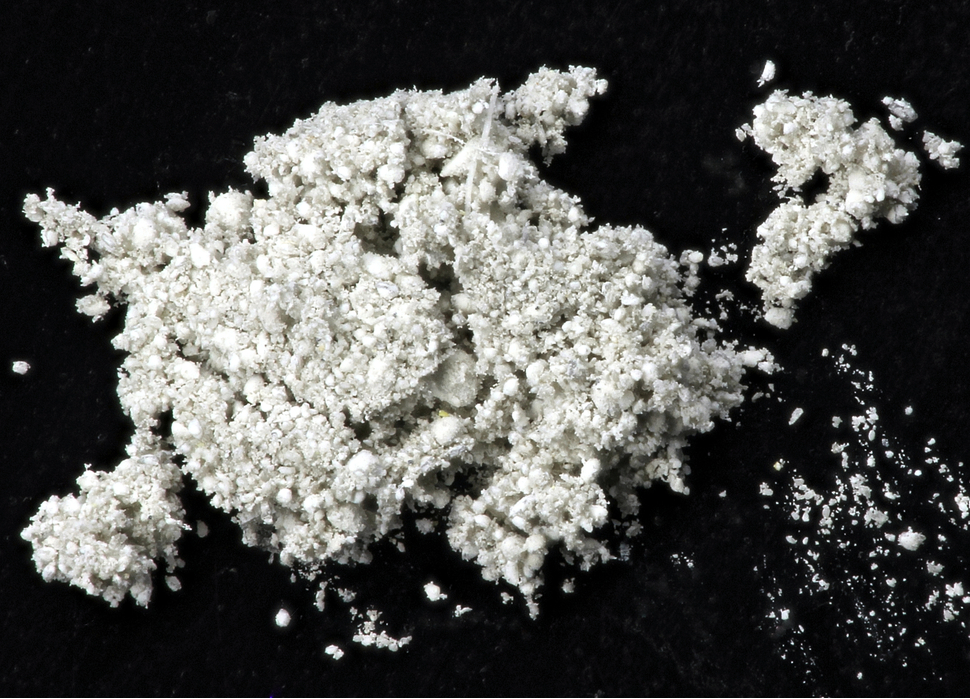Smirnite
A valid IMA mineral species
This page is currently not sponsored. Click here to sponsor this page.
About Smirnite
Formula:
Bi2Te4+O5
Colour:
Colourless, gray, light yellow
Hardness:
3½ - 4
Specific Gravity:
7.78
Crystal System:
Orthorhombic
Name:
Named after Vladimir Ivanovich Smirnov (Владимир Иванович Смирнов) (18 (31) January 1910, Moscow, Russian Empire - 16 June 1988, Moscow, USSR), chief of economic minerals studies in the geology department, Moscow State University, a specialist in ore deposit geology. He also served as Vice-President of the International Union of Geological Sciences (1968-1976).
Type Locality:
This page provides mineralogical data about Smirnite.
Unique Identifiers
Mindat ID:
3686
Long-form identifier:
mindat:1:1:3686:9
GUID
(UUID V4):
(UUID V4):
c3340076-768e-4bba-93fc-714576916c32
IMA Classification of Smirnite
Approved
IMA Formula:
Bi3+2Te4+O5
Approval year:
1982
First published:
1984
Classification of Smirnite
4.JK.40
4 : OXIDES (Hydroxides, V[5,6] vanadates, arsenites, antimonites, bismuthites, sulfites, selenites, tellurites, iodates)
J : Arsenites, antimonites, bismuthites, sulfites, selenites, tellurites; iodates
K : Tellurites without additional anions, without H2O
4 : OXIDES (Hydroxides, V[5,6] vanadates, arsenites, antimonites, bismuthites, sulfites, selenites, tellurites, iodates)
J : Arsenites, antimonites, bismuthites, sulfites, selenites, tellurites; iodates
K : Tellurites without additional anions, without H2O
Dana 7th ed.:
34.1.9.1
34.1.8.1
34 : SELENITES, TELLURITES AND SULFITES
1 : A(XO3)
34 : SELENITES, TELLURITES AND SULFITES
1 : A(XO3)
28.3.16
28 : Selenites, Selenates, Tellurites, and Tellurates
3 : Tellurites
28 : Selenites, Selenates, Tellurites, and Tellurates
3 : Tellurites
Mineral Symbols
As of 2021 there are now IMA–CNMNC approved mineral symbols (abbreviations) for each mineral species, useful for tables and diagrams.
| Symbol | Source | Reference |
|---|---|---|
| Smr | IMA–CNMNC | Warr, L.N. (2021). IMA–CNMNC approved mineral symbols. Mineralogical Magazine, 85(3), 291-320. doi:10.1180/mgm.2021.43 |
Physical Properties of Smirnite
Transparency:
Transparent, Translucent
Colour:
Colourless, gray, light yellow
Comment:
Darkens on exposure to sunlight
Hardness:
3½ - 4 on Mohs scale
Hardness:
VHN20=142 - 227 kg/mm2 - Vickers
Comment:
Great anisotropy
Tenacity:
Brittle
Cleavage:
Perfect
Perfect on {010}
Distinct in other directions
Perfect on {010}
Distinct in other directions
Density:
7.78 g/cm3 (Measured) 7.72 g/cm3 (Calculated)
Optical Data of Smirnite
Type:
Biaxial (+)
RI values:
nα = 2.350 nβ = 2.360 nγ = 2.460
2V:
Measured: 35° to 40°, Calculated: 38°
Max Birefringence:
δ = 0.110

Image shows birefringence interference colour range (at 30µm thickness)
and does not take into account mineral colouration.
and does not take into account mineral colouration.
Surface Relief:
Very High
Anisotropism:
Strong
Dispersion:
none
Optical Extinction:
Straight extinction.
Reflectivity:
| Wavelength | R1 | R2 |
|---|---|---|
| 400nm | 20.7% | 19.1% |
| 420nm | 20.5% | 18.8% |
| 440nm | 20.0% | 18.1% |
| 460nm | 19.7% | 17.8% |
| 480nm | 19.4% | 17.5% |
| 500nm | 19.3% | 17.5% |
| 520nm | 19.3% | 17.4% |
| 540nm | 19.2% | 17.4% |
| 560nm | 19.1% | 17.3% |
| 580nm | 19.0% | 17.2% |
| 600nm | 18.8% | 17.0% |
| 620nm | 18.7% | 16.8% |
| 640nm | 18.5% | 16.7% |
| 660nm | 18.3% | 16.5% |
| 680nm | 18.2% | 16.3% |
| 700nm | 18.0% | 16.3% |
Graph shows reflectance levels at different wavelengths (in nm). Top of box is 100%. Peak reflectance is 20.7%.
R1 shown in black, R2 shown in red
Comments:
Z = a, Y = b, X = c
Chemistry of Smirnite
Mindat Formula:
Bi2Te4+O5
Elements listed:
Crystallography of Smirnite
Crystal System:
Orthorhombic
Class (H-M):
mm2 - Pyramidal
Cell Parameters:
a = 16.447(19) Å, b = 5.513(3) Å, c = 11.579(15) Å
Ratio:
a:b:c = 2.983 : 1 : 2.1
Unit Cell V:
1,049.89 ų (Calculated from Unit Cell)
Z:
8
Morphology:
Crystals tabular to 2mm, aggregates and incrustations.
Comment:
Space Group: Cm2a.
Crystal Structure
Load
Unit Cell | Unit Cell Packed
2x2x2 | 3x3x3 | 4x4x4
Unit Cell | Unit Cell Packed
2x2x2 | 3x3x3 | 4x4x4
Show
Big Balls | Small Balls | Just Balls | Spacefill
Polyhedra Off | Si Polyhedra | All Polyhedra
Remove metal-metal sticks
Big Balls | Small Balls | Just Balls | Spacefill
Polyhedra Off | Si Polyhedra | All Polyhedra
Remove metal-metal sticks
Display Options
Black Background | White Background
Perspective On | Perspective Off
2D | Stereo | Red-Blue | Red-Cyan
Black Background | White Background
Perspective On | Perspective Off
2D | Stereo | Red-Blue | Red-Cyan
View
CIF File Best | x | y | z | a | b | c
CIF File Best | x | y | z | a | b | c
Rotation
Stop | Start
Stop | Start
Labels
Console Off | On | Grey | Yellow
Console Off | On | Grey | Yellow
Data courtesy of the American Mineralogist Crystal Structure Database. Click on an AMCSD ID to view structure
| ID | Species | Reference | Link | Year | Locality | Pressure (GPa) | Temp (K) |
|---|---|---|---|---|---|---|---|
| 0014203 | Smirnite | Mercurio D, El Farissi M, Frit B, Goursat P (1983) Etude structurale et densification d'un nouveau materiau piezoelectrique: Bi2TeO5 Materials Chemistry and Physics 9 467-476 | 1983 | synthetic | 0 | 293 |
CIF Raw Data - click here to close
X-Ray Powder Diffraction
Powder Diffraction Data:
| d-spacing | Intensity |
|---|---|
| 3.226 Å | (100) |
| 2.890 Å | (60) |
| 1.996 Å | (30) |
| 1.992 Å | (28) |
| 1.727 Å | (27) |
| 2.743 Å | (24) |
| 2.750 Å | (23) |
Geological Environment
Paragenetic Mode(s):
| Paragenetic Mode | Earliest Age (Ga) |
|---|---|
| Stage 7: Great Oxidation Event | <2.4 |
| 47d : [Arsenates, antimonates, selenates, bismuthinates] | |
| 47e : [Vanadates, chromates, manganates] | |
| 47h : [Near-surface oxidized, dehydrated minerals] |
Geological Setting:
Oxidation zone of tellurium bearing hydrothermal ore deposits.
Type Occurrence of Smirnite
General Appearance of Type Material:
Tabular crystals up to 2 mm and aggregates, or crusts on quartz and tellurides.
Place of Conservation of Type Material:
A.E. Fersman Mineralogical Museum, Academy of Sciences, Moscow, Russia, 82767.
Geological Setting of Type Material:
Occurs in fractures of vein quartz and chalcedony, containing the relics of tellurobismuthite, tetradymite, volynskite and galena.
Associated Minerals at Type Locality:
Reference:
Spiridonov, E.M., Demina, L.A., Dolgikh, V.A., Antonina, G.M., Rakcheev, A.D., Bulgak, L.V., Lebedeva, S.I., Chvileva, T.N. (1984) Smirnite Bi2TeO5 - a new mineral. Doklady Akademii Nauk SSSR: 278: 199-202.
Synonyms of Smirnite
Other Language Names for Smirnite
Common Associates
Related Minerals - Strunz-mindat Grouping
| 4.JK. | Matthiasweilite | PbTe4+O3 |
| 4.JK.05 | Winstanleyite | TiTe4+3O8 |
| 4.JK.05 | Walfordite | (Fe3+,Te6+)Te4+3O8 |
| 4.JK.10 | Spiroffite | Mn2+2Te4+3O8 |
| 4.JK.10 | Zincospiroffite | Zn2Te4+3O8 |
| 4.JK.15 | Balyakinite | Cu(TeO3) |
| 4.JK.20 | Rajite | Cu(Te4+2O5) |
| 4.JK.25 | Carlfriesite | CaTe4+2Te6+O8 |
| 4.JK.30 | Denningite | (Mn2+,Ca,Zn)Te4+2O5 |
| 4.JK.35 | Chekhovichite | Bi2Te4+4O11 |
| 4.JK.45 | Choloalite | (Cu,Sb)3(Pb,Ca)3(TeO3)6Cl |
| 4.JK.50 | Fairbankite | Pb2+12(Te4+O3)11(SO4) |
| 4.JK.55 | Plumbotellurite | Pb(TeO3) |
| 4.JK.60 | Magnolite | [Hg2]2+[Te4+O3] |
| 4.JK.65 | Moctezumite | Pb(UO2)(TeO3)2 |
| 4.JK.70 | Schmitterite | (UO2)(TeO3) |
| 4.JK.75 | Cliffordite | (UO2)Te4+3O7 |
Other Information
Thermal Behaviour:
Melts at 900 C without decomposition.
Health Risks:
No information on health risks for this material has been entered into the database. You should always treat mineral specimens with care.
Internet Links for Smirnite
mindat.org URL:
https://www.mindat.org/min-3686.html
Please feel free to link to this page.
Please feel free to link to this page.
Search Engines:
External Links:
Mineral Dealers:
References for Smirnite
Localities for Smirnite
Locality List
 - This locality has map coordinates listed.
- This locality has map coordinates listed.
 - This locality has estimated coordinates.
ⓘ - Click for references and further information on this occurrence.
? - Indicates mineral may be doubtful at this locality.
- This locality has estimated coordinates.
ⓘ - Click for references and further information on this occurrence.
? - Indicates mineral may be doubtful at this locality.
 - Good crystals or important locality for species.
- Good crystals or important locality for species.
 - World class for species or very significant.
(TL) - Type Locality for a valid mineral species.
(FRL) - First Recorded Locality for everything else (eg varieties).
- World class for species or very significant.
(TL) - Type Locality for a valid mineral species.
(FRL) - First Recorded Locality for everything else (eg varieties).
All localities listed without proper references should be considered as questionable.
Armenia (TL) | |
| Spiridonov et al. (1984) +1 other reference |
Georgia | |
| Kekelia et al. (2017) |
Kazakhstan | |
| Pekov (1998) +1 other reference |
Poland | |
| Pieczka et al. (2011) |
Russia | |
| Sidorov et al. (2007, November) |
| Kondratieva et al. (2021) |
| [[1]]Kondratieva et al. (2023) |
| Pavel.M. Kartashov (n.d.) |
Spain | |
| Romero Silva +3 other references |
Ukraine | |
| Pekov (1998) +1 other reference |
Quick NavTopAbout SmirniteUnique IdentifiersIMA Classification Classification Mineral SymbolsPhysical Properties Optical Data Chemistry Crystallography Crystal StructureX-Ray Powder DiffractionGeological EnvironmentType Occurrence SynonymsOther LanguagesCommon AssociatesStrunz-MindatOther InformationInternet Links References Localities Locality List







 symbol to view information about a locality.
The
symbol to view information about a locality.
The 



Sotk gold mine, Sotk, Gegharkunik Province, Armenia